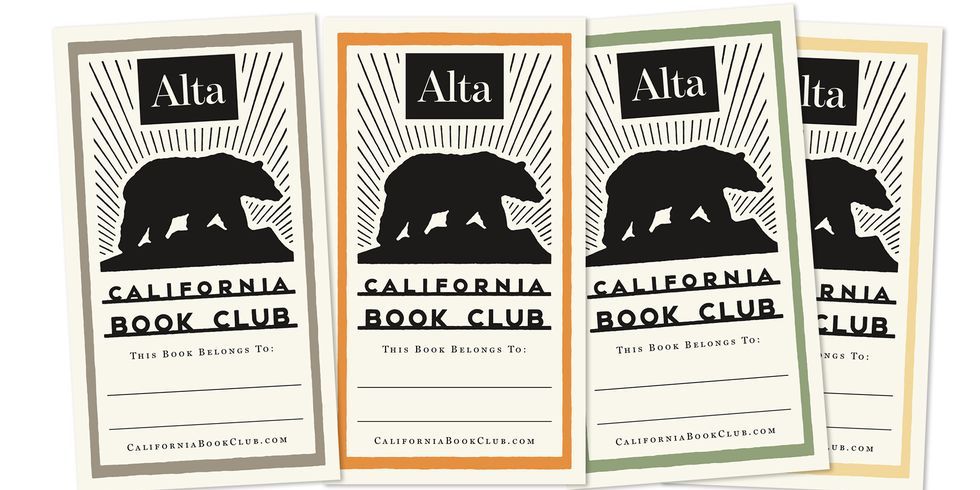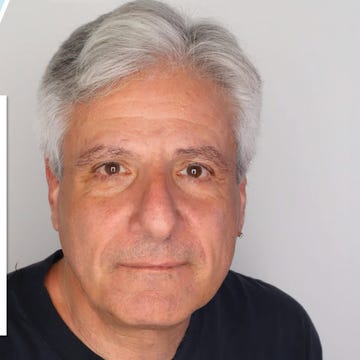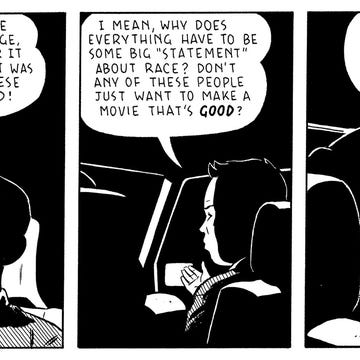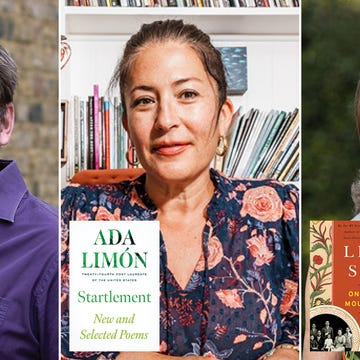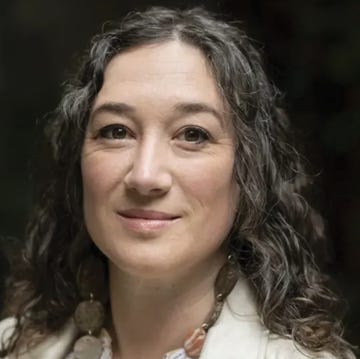Our present-day literary landscape would look very different without California Book Club host John Freeman’s extraordinary sensibility—on display in his many capacities. Not only an accomplished essayist, Freeman is a prolific critic and an executive editor at Knopf. In 2015, after leaving his role as editor of Granta, he debuted the preeminent literary magazine Freeman’s, which he edited over the past near decade. If you’re prospecting for literary treasure, there’s no better place to start your search than journals and magazines—these compilations are the mighty undersung heroes of culture, introducing authors and works that readers might otherwise miss, sometimes arranging them so that the pieces speak to one another.
This fall, Freeman’s 10-issue run closes with Conclusions, full of striking essays, stories, short shorts, and poems that circle the titular theme in unusual and rich ways. For who will forget Tania James’s story about a mother’s unexpected sheltering of two Neanderthal sisters created in vitro, the last of their kind, who are hunted by tourists? Or Chinelo Okparanta’s “Fatu,” in which a woman tries to conceive as a relationship slips away. Mieko Kawakami writes the story of a lonely and painful marriage, while Li Qingzhao writes poems that touch on spring and romance—the breath of a new beginning you might find at a conclusion. In a brief essay, novelist and essayist Aleksandar Hemon muses with his signature feeling and perspicacity on why we would write or read while sitting on the “precipice of cataclysmic loss.” And still more surprises await you within these pages.
Mark October 17 at 7 p.m. Pacific time on your calendar. Join Freeman, Zyzzyva editor and CBC selection panelist Oscar Villalon, and prior CBC authors and contributors to Freeman’s Elaine Castillo and Tommy Orange to celebrate Conclusions at City Lights Bookstore in San Francisco as part of Litquake’s 2023 lineup. This event will also be available to join on Zoom.
Freeman and I corresponded by email about Conclusions.
What was the first literary magazine you fell in love with?
If by truly first, then it has to be Cricket, which was an illustrated magazine founded in 1973 to be the New Yorker for kids. It had amazing stories in it by Ursula Le Guin and Isaac Bashevis Singer and Eric Carle. When that arrived, I’d sit in my closet and read it. I think what I read there is why I was always assuming one day animals would talk.
You’d previously been an editor at the literary magazine Granta—what inspired you to create Freeman’s? Did you always conceive of Freeman’s as a 10-course meal?
My life in magazines made sense to me when I began to share meals with writers—often in homes, where the situation (in the best of times) is not set up for peacocking or spectating but connecting over stories. If you listen carefully, people explain themselves in the stories they tell. I wondered if it was possible to make a magazine that had that intimacy and unguardedness. A magazine that felt not like a buffet but a meal that moved course to course, with the sound of voices carrying it along. This format has drawn me toward the writers who have been in Freeman’s—writers who, no matter the genre, have a warmth and intensity and orality to their work.
Conclusions is bookended by your meditation on Barry Lopez and an essay by him at the beginning and a brief manifesto about how we should live at the end. The latter feels very much of a piece with the generosity with which you approach the conversations you have with authors for the California Book Club. Was Freeman’s influenced by your conversations with Lopez?
Have you ever had a friend who left little of you untouched? Barry was that friend for me. His work and his presence—sometimes distant, sometimes close—beckoned me toward an enlarged idea of being alive. His voice and his prose sang the beatific song of geography, as well as its complex psalms of grief: geography also being at the root of many violences. He was creaturely, extremely well-read, and a great listener. A good person to be around in inclement weather. A lover of the 90-minute phone call. He loved to learn things—and I met him in his 60s! He was a walking reminder of the pleasure of being alive. I wanted to publish writing that felt like that, even if it sounded different than his prose—which was so beautiful. Have you ever read his essays? About This Life has some great ones.
What was your process for choosing or requesting pieces for the Conclusions issue of Freeman’s? What surprised you most about how writers approached this theme?
Knowing this was likely to be the last issue, I spread the word as best I could and then made a beeline toward a few writers whom I really wanted to get into the issue—writers whose work I love and with whom I’d had a few close calls in the past. Rachel Khong and Chinelo Okparanta are two of those writers, and I was lucky both had stories that happened to fit the theme. Khong reminds me (as a short story writer) of Ted Chiang some days, where her world-building is so rich and deep and so neatly tuned that one day I would not be surprised if 10 of her stories are turned into movies. Meantime, Okparanta is one of those writers who remind you what it feels like to be tumbling in or out of love—and this story of hers is all about how to begin something profound in an aftermath. That’s part of the luck of publishing a themed literary journal (like Freeman’s, or Granta, for that matter). You have to hope there’s a synchronicity in the air to a space. How to live in a time of endings feels like a question a lot of people are asking now, so the pieces came quickly this time.
There’s an atmospheric resonance, often a feeling of mysteriousness, among the pieces in Freeman’s. How did you conceptualize the arrangement of the pieces and what pieces belong next to each other?
I think ideas and themes have a kind of music. Rage is staccato; desire seethes. Retribution might be a long, slow buildup; forgiveness comes crashing toward you in loops. Making a magazine, for me, is about hearing those sounds and trying to arrange them into a greater whole—a kind of multifarious coherence. In this issue, for example, there’s an orchestral affinity between Matt Sumell’s list of all the things he likes and the mournful, moonlit poem of Denis Johnson, which takes place as he’s walking up and down a street in Provincetown at night, listening to a song and wondering if someone he loves has a light on. Astoundingly, they’re both also in conversation—at least my ear tells me so—with the poems of Li Qingzhao, beautifully translated here by Wendy Chen, and a poem by Louise Erdrich, which has an unbearable beauty to it, the way she tries to read the signs of life and gives up and gives in to the wash of experience. When I was arranging the issue, I wanted these four pieces almost equally spaced across the issue. They are like notes of longing and delight, regret and wonder. All of which to me are part of conclusions.
There’s a strong sense through many pieces in Conclusions that conclusions make space for beginnings or are available to us only through storytelling, that things take new forms and containers rather than terminating altogether. This is the last issue of Freeman’s, but what new beginning or story do you think this conclusion might birth?
My hope with Freeman’s was to provide writers with the excuse, the space or deadline, to write what was on their mind. As a result, some books have grown out of these pages—books like Valeria Luiselli’s Tell Me How It Ends, or Sunjeev Sahota’s China Room, or even Jennifer Egan’s The Candy House, which found a keyhole at one point through a short piece she wrote for the California issue. In that way, there may be a book lurking in these pages, or two or three, and books are—the great ones—endless, because we are, I hope. I honestly believe Ghaith Abdul-Ahad’s piece has that potential, as it tells the story, in brief, of people in Yemen not being able to learn from all the wars around them. They believed, like so many, that their war would be different. Anyway, we live and we die, yes, but within those bookends, we have possibilities. The biggest beginning here, then, is what these pieces—be it Rebecca Makkai’s extraordinary little essay on the remains of her grandfather or Omar El Akkad’s short story about a world in which we don’t die—open up in us as readers. To me, that’s an immensity only stories can describe.•
Join us on October 19 at 5 p.m., when Jennifer Egan will appear in conversation with Freeman and special guest Ivan Kreilkamp to discuss The Candy House. Register for the Zoom conversation here.
COMIC COMMENTARY
Writer and artist Nichole LeFebvre considers the use of sensory detail in The Candy House. —Alta
Q&A WITH JENNIFER EGAN
Alta Journal books editor David L. Ulin interviews Egan about The Candy House. —Alta
GOTHIC SKIN CARE
Chris Daley reviews Mona Awad’s novel Rouge, writing, “Awad keeps the surreal action at an accessible pitch before raising the stakes here for a truly creepy third act.” —Alta
CRIME READS
We’re thrilled to see that prior CBC author Steph Cha’s Your House Will Pay, prior CBC author Michael Connelly’s The Lincoln Lawyer, forthcoming CBC author Laila Lalami’s The Other Americans, and CBC contributor David Heska Wanbli Weiden’s Winter Counts have been named to a list of the 100 best mystery and crime novels of all time. —Time
Alta’s California Book Club email newsletter is published weekly. Sign up for free and you also will receive four custom-designed bookplates.




